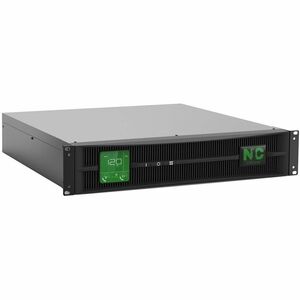There are a lot of factors that you should consider when buying a single-phase lithium ion UPS system. One of the most important things to do is size your system to your needs.
Here are a few tips to do just that.
Terminologies and Facts in UPS
The first thing that you have to know before you do a sizing of your UPS system’s capacity is to know the basic terms and some essential facts about the whole system.
UPS systems are often “sized” by a kW (kilowatts) and/or a kVA (kilo-volt-amperes) rating. For example, a 1 kVA UPS means its circuitry can handle 1,000 volt-amperes.
In physics, the basic rule for AC power states “watts = volts x amps.” So a 1,000VA UPS should be able to handle 1,000 watts, right?
Ideally, but not quite. No UPS is 100% efficient, and some power capacity is lost in the transformers and circuitry of the backup system. This is called reactance. Because of this, most UPS manufacturers will list a “power factor” to use and calculate the maximum wattage a UPS system can handle. This means that the formula for watts = volts x amps x power factor.
For example, 1kVA UPS from N1C has the capacity to power 900 watts of connected equipment. This means the UPS has a “power factor” of 0.9.
Other, more inefficient UPS systems may have a power factor of less than that (0.8 or 0.75, etc), meaning they will power less than 900 watts of connected equipment.
Running a full 900 watts on that 1 kVA UPS means the UPS is operating at 100% load capacity. Going over that may cause the UPS to short circuit and fail. Using less wattage on a UPS, say 450 watts on the 1kVA UPS, means it is running at 50% power. This will lengthen the battery runtime of the UPS when the power goes out.
Wiggle Room for Maximum Capacity
Each device you connect to your UPS should have a maximum wattage rating on its label. Determine what devices you will connect to your UPS and add up their watt usage. This will help you determine the maximum load capacity.
When you have come up with a realistic estimate of the load capacity, leave some wiggle room. Give at least 20% room for marginal error. This means that you should only run the UPS system around 80% of what you have calculated. This will allow you to have a ceiling whenever you reach peak conditions. Also, starting some electrical devices will cause a spike in watts used. This gives the UPS some leeway so you don’t overload it. (Example, the initial startup of a hair dryer uses more watts than when the hair dryer is operating normally a few moments later.)
So if you think you need a full 900 watts, it would be wise to get a 2kVA system to run it at 50% load capacity. There would be no wiggle room at all if you bought a 1kVA system had a 900-watt load. You’d be at 100% capacity from the start. This is not recommended.
UPS Runtime
When you know your load requirements, next think about your battery runtime requirements.
If you’re connecting equipment that is on a different floor or wing of your office complex or is in an offsite location, you may need more time for the UPS to protect your load and keep devices running. If you know your building’s generator will kick in right away during an outage, maybe you can get by with less battery runtime.
The rating of the UPS will help you determine the runtime you’ll get.
For example, the 1kVA UPS from N1 Critical Technologies offers 11 minutes of runtime at 100% load (900 watts). If your load was 900 watts and you used a 2kVA UPS from N1 Critical, you’d be running at 50% load, and would get 24 minutes of runtime. If you ran 900 watts on a 3kVA UPS from N1C, you’d be running at 33%, and would get more than 30 minutes runtime, etc.
Lithium-Ion UPS systems have a longer runtime when compared to similar lead-acid. The chemistry of lithium-ion battery packs — like those inside N1 Critical UPS systems — store more power in a smaller space, making them capable of providing extended runtime in the same size UPS unit.
This gives users additional flexibility to “wait out” an outage for a little longer, or give extra travel time to an off-site location during a power outage. These extra minutes can be critical and that’s why lithium-ion batteries are becoming the future of energy storage in UPS applications.



